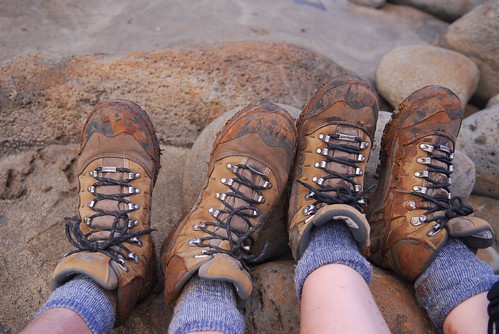 We've been enjoying compiling our own descriptions of some of our favorite parks, and hope to continue. But we also thought we'd pass along some other excellent resources for finding trails in the DC area.
We've been enjoying compiling our own descriptions of some of our favorite parks, and hope to continue. But we also thought we'd pass along some other excellent resources for finding trails in the DC area.Running Around Town (RunDC.com) has an extensive collection of trail descriptions, complete with mileage counts, directions, and even suggestions for nearby restaurants. Although they were compiled for runners, most are also relevant for hikers.
The Washington Area Bicyclists Association has a good set of links to maps of local trails.
Trail Voice is a new website that posts once a week about local trails, and the organizations and individuals that preserve and protect those places. Each post has a brief trail description and links to a relevant map.
Local Hikes has a big mix of hikes that may or may not seem "local" to you, but there are certainly several inside and near the beltway. Most trail descriptions are short, but they give a sense of what you're in for; additional comments (with star ratings) are posted by other hikers.
Hiking Upward has hike descriptions for several parks in Virginia and West Virginia. As suggested by the name, most are well outside the beltway, in the mountains. But a few closer-in hikes along the Potomac are included. There is a helpful summary page that allows you to pick hikes by location, or by any of the other factors they're rated by: difficulty, streams, views, solitude, and camping. On each trail's page, there's a trail map, a trail description, and a Google map that can be used to get directions. Many hikers have also posted their own reviews in comments.
If you want to plan your own route, you can use Map My Walk or Map My Run (basically the same site) to estimate mileage. Unlike Google Maps (which we also use extensively), these sites will allow you to draw a route that doesn't follow a street. In some parks, the trails are clearly identified on the maps; in others, you'll have to estimate the route based on another map.
To figure out your own car-free routes, try a combination of Google Maps and the WMATA Trip Planner. Find the park you're trying to visit, then zoom in on the Google map until you can see a nearby street address to plug into the trip planner.
Did we miss any good resources? Let us know in comments...
Like the photo in this post? Mouse over for credits; a click takes you to the photographer on Flickr.


